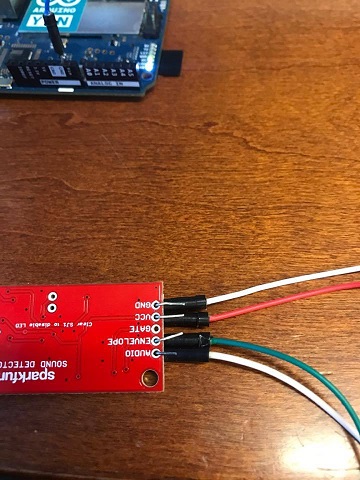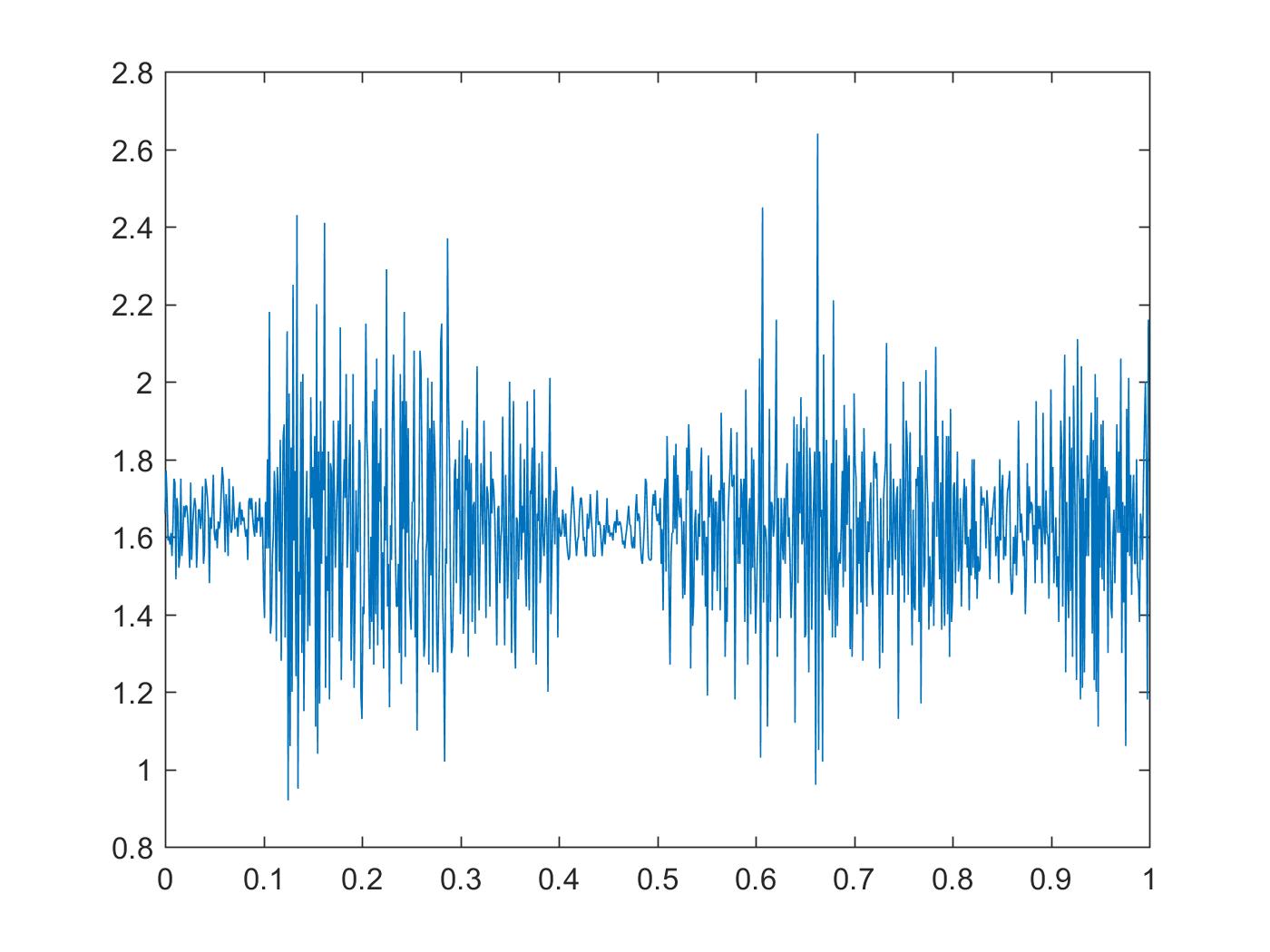So currently I am attempting to pick up audio signals in an arduino via the analog input pins and an electret microphone circuit.
The device I am using for audio capturing is the sparkfun sound detector [It wouldnt allow me to post more than 2 links and the pictures I've uploaded after the edits are more important so I apologize for taking the link for this item out]
I have ordered pins to solder onto this board, but at the moment, I have it wired up as shown in the attached picture (which may be the issue?)
The problem is, the audio output from the sound-detector board gives me a constant value on the arduino, whether there is sound coming into the microphone or not. The only time the value changes is when I unplug the sound-detector board from the power source, at which point I get values of 0.
The envelope detector output, however, works correctly. In a quiet environment, I get very low voltage values, and when speaking into the microphone, I get varying voltage values depending on how loudly I am speaking into the microphone.
However, for my application, I need raw audio-data and not the audio signal envelope.
Does anyone know what the issue could be, the code is very simply and shown below.
float i;
void setup()
{
Serial.begin(9600);
}
void loop() {
// send the value of analog input 0:
Serial.println(analogRead(A0));
// wait a bit for the analog-to-digital converter
// to stabilize after the last reading:
}
3/16 EDIT: Sampling Rate Code
So some people were mentioning how I am only achieving a sampling rate of around 150 hz or 500 hz using the analogread function (Unless I misunderstood)
Below is some code I am using to measure the amount of time that passes between an analogread sample;
// Arrays to save our results in
unsigned long start_times[100];
unsigned long stop_times[100];
unsigned long values[100];
// Setup the serial port and pin 2
void setup() {
Serial.begin(9600);
}
void loop() {
unsigned int i;
// capture the values to memory
for(i=0;i<100;i++) {
start_times[i] = micros();
values[i] = analogRead(A0);
stop_times[i] = micros();
}
// print out the results
Serial.println("\n\n--- Results ---");
for(i=0;i<100;i++) {
Serial.print(values[i]);
Serial.print(" elapse = ");
Serial.print(stop_times[i] - start_times[i]);
Serial.print(" us\n");
}
delay(6000);
the print-out results of the above code shows an average time of about 116 micro-seconds;
1/116-uS is around 8.6kHz, am I misunderstanding something here? I understand that the Serial.print command in the first block of code is slowing the sampling down significantly, if that is what users here were initially trying to convey; However, if I sample and store the analog-input values in an array and plot them at some later point, without using any serial command, the audio output should be relatively well via the sound-detector and that plotted signal should resemble a fairly decent audio-signal, correct?
8.6kHz is what I was aiming to achieve as far as sampling rate goes, will the audio output really be this distorted?
3/17 EDIT: Audio-Output MATLAB Plot
Well, here is a quick Matlab plot I made of the audio signal (I simply took 1000 sampled values and plotted them against a time vector)
This is actually looking pretty decent, maybe the non-soldered wires are a big issue
If i'm missing anything else that might be effecting this i'm sure someone here will catch it.


